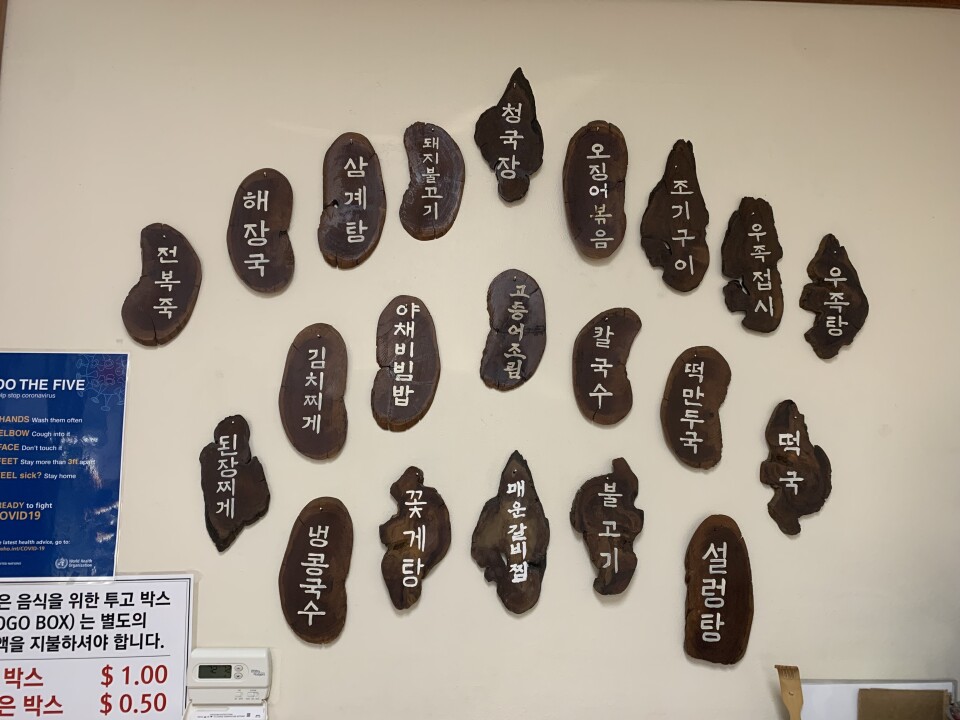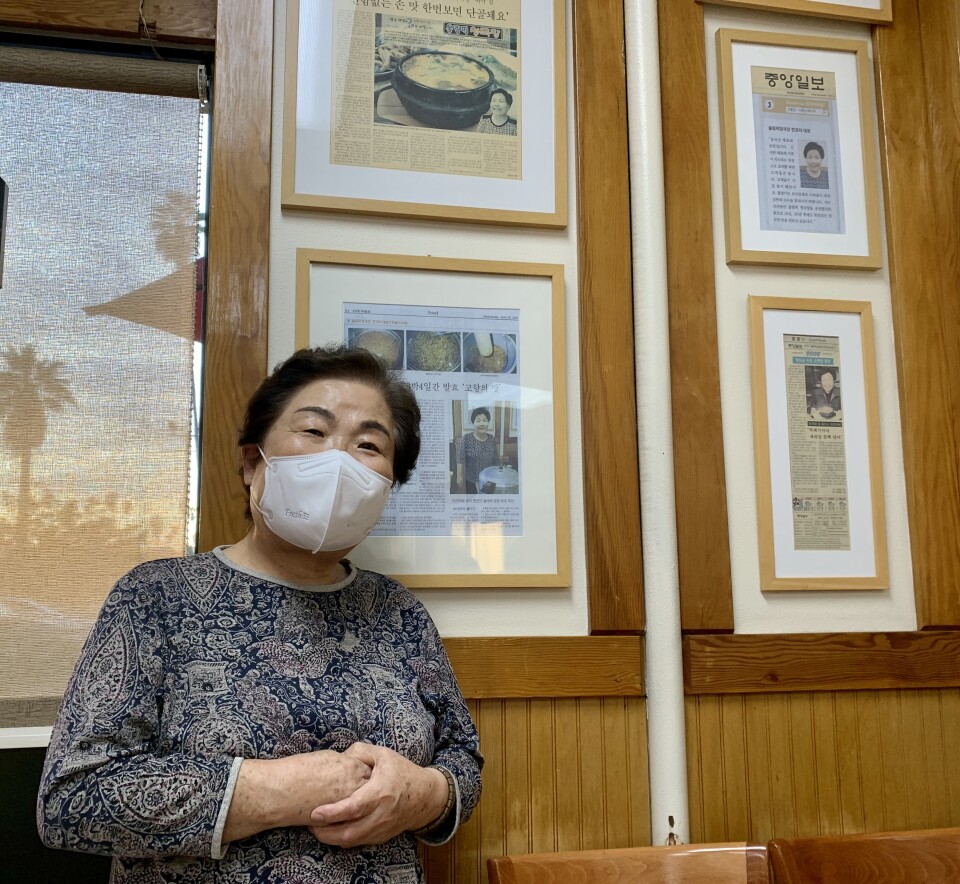Truth matters. Community matters. Your support makes both possible. LAist is one of the few places where news remains independent and free from political and corporate influence. Stand up for truth and for LAist. Make your year-end tax-deductible gift now.
First A Pandemic, Now A Supply Crisis. How This Koreatown Mom-And-Pop Is Trying To Survive

David and Kyong Han can handle a challenge. The couple opened the doors to Olympic Restaurant in 1992, just weeks after the L.A. uprising that left thousands of Korean-run businesses damaged and destroyed.
They began serving a small menu of Korean comfort food such as bowls of galbi jjim and soondubu jjigae as patrols walked the streets.
“At that time, there [was] the Koreatown protection team,” David Han recalls. “They go around.”
The Hans’ biggest test would actually come three decades later: the global pandemic. They switched to only take-out as diners were ordered to stay home.

More recently the pandemic has struck in another way.
As COVID spread last year, factory production sputtered as countries shut down. But this year, as the pandemic eased here, and stimulus checks went out in the mail, consumer demand skyrocketed. And that shocked a supply chain system hobbled by the pandemic, as well as by long-standing problems such as a shortage of truckers and warehouse workers.
Delivery and production costs jumped, sending food prices soaring. Kyong Han says their October expenses went from $12,000 or $13,000 to about $17,400. Prices climbed by double-digit percentages on everything from takeout containers to beef.
The Hans also depend on imports such as barley tea they brew, the red chili powder used in the house kimchi, and corvina — a fish caught in the Yellow Sea next to the Korean peninsula. All are pricier now — when you can find them.
“We're talking about these essential Korean ingredients that these restaurants just can't do without,” said Cindy Shin of the L.A.-based Korean Food Global Association, which promotes Korean cuisine and restaurants.
Shin says its members are spending 30-50% more on ingredients and supplies.
“Some restaurants, they're forced to raise their prices to survive,” Shin says. “But even if they do, it's very minimal because they also don't want to drive their longtime customers away.”
The same dilemmas are plaguing Koreatown’s leading kimchi makers.
Guiyong Yang, who owns the Kae Sung Market, says he saw a 30% surge in business in the spring of 2020 as stay-at-home orders went into effect and people binge-bought kimchi. But the level of sales has leveled off to about 5% higher than normal — not enough to cover the increased cost of supplies.

Chili powder from Korea has become prohibitively expensive for him, so he has switched to using a similar Mexican product, though that is up in price as well.
There are ingredients, though, that Yang will not substitute, such as Napa cabbage. And he is still hopeful that Korean radishes from Jeju Island — famed for its rich, volcanic soil — will still be shipped this winter.
“That's the best quality out of all other radishes supplied by others,” Yang says.
Many Korean imports pass through the Port of Los Angeles, the busiest in the Western Hemisphere. Along with the neighboring port in Long Beach, this is where a lot of the supply chain drama is playing out. Trucks idle in lines outside terminals, waiting to move shipping containers, stacked in towers five to six boxes high on cargo vessels and on the ports.

Everyone from President Biden to Governor Newsom is weighing in with strategies to move goods off the docks — like a plan announced last month to shift the Port of L.A. to a 24/7 operation. But it hasn’t happened yet. Transportation Secretary Pete Buttigieg acknowledged the challenges in a briefing last week.
"First of all, let's recognize it's, of course, not [like] flipping a switch,” Buttigieg said. “There are so many players even just on the grounds of the port.”
The supply crisis is expected to last into next year — at least another nine months, predicts Nick Vyas, who co-founded the Randall R. Kendrick Global Supply Chain Institute at USC’s Marshall School of Business.
“I'm not that optimistic,” Vyas says. “We're seeing third, fourth waves [of COVID] coming through other parts of the world. And those aftershocks are continuing to be exposed in our global supply chain systems. Forget about having the state of equilibrium anytime soon.”
The businesses most in trouble are small to moderate-sized ones such as mom-and-pop restaurants that don’t enjoy economies of scale like say, a McDonald’s.
“The big players have the market size to somewhat circumvent and deflect the consequences of this disruption,” Vyas says.

On a recent evening in Koreatown, a quiet din fell over Olympic Restaurant as the Hans welcomed the early dinner crowd.
The couple has reluctantly tweaked the prices of some items by cents. They don’t want to raise prices by much more and scare off valued customers, some of whom have been coming for decades.
Instead they’ve relied on their Social Security payments and Paycheck Protection Program loans to get by the past few months. But they know what they have to do if their supply nightmare persists into 2022.
“Still going up this way?” David Han says. “We have to have [the] price going up next year.”








